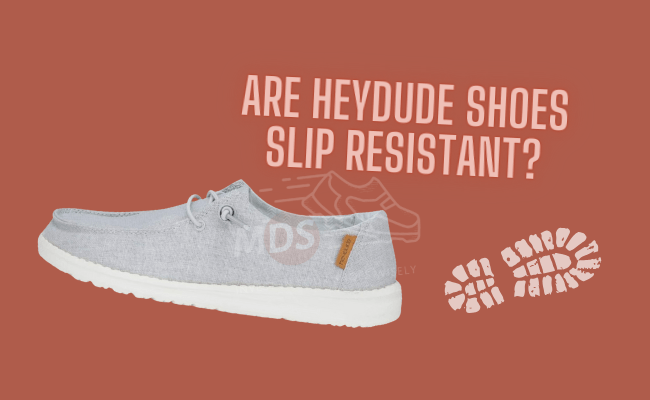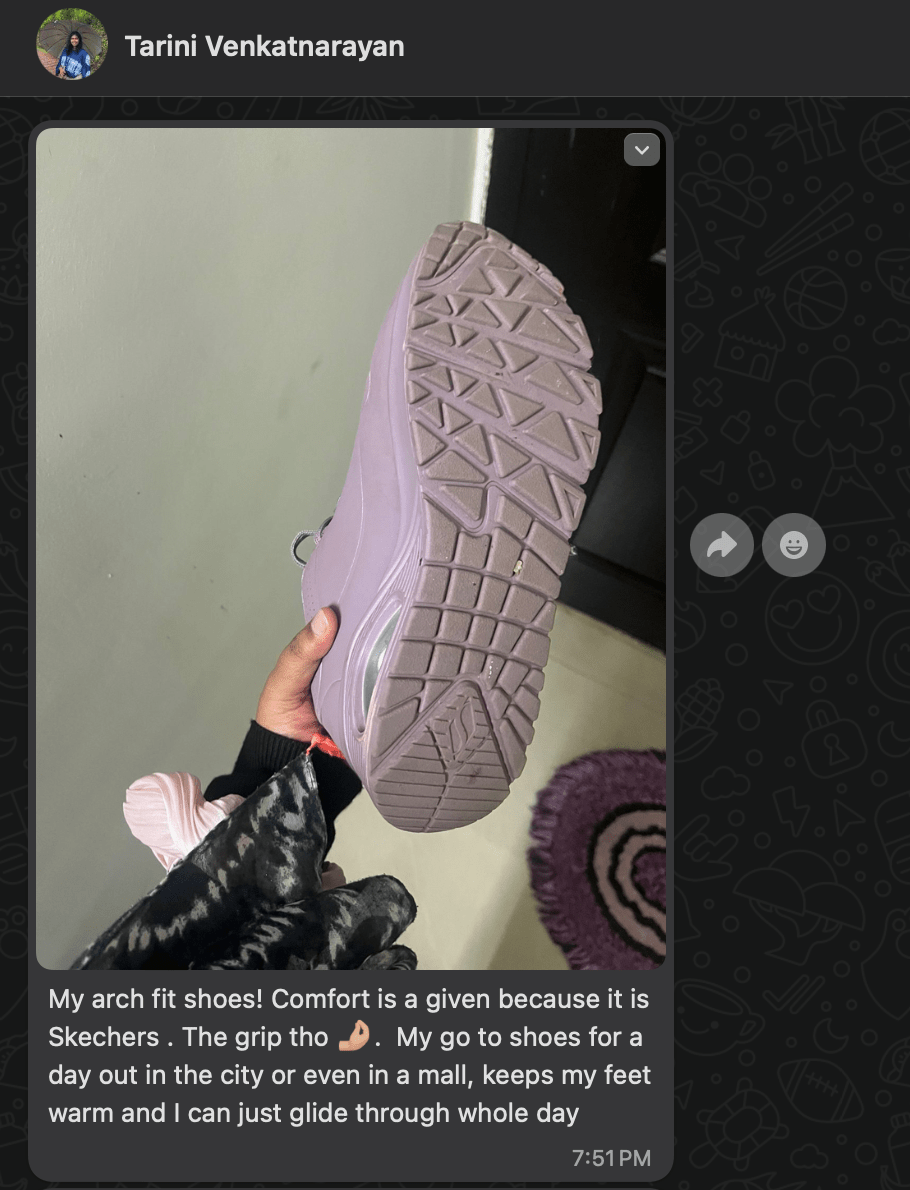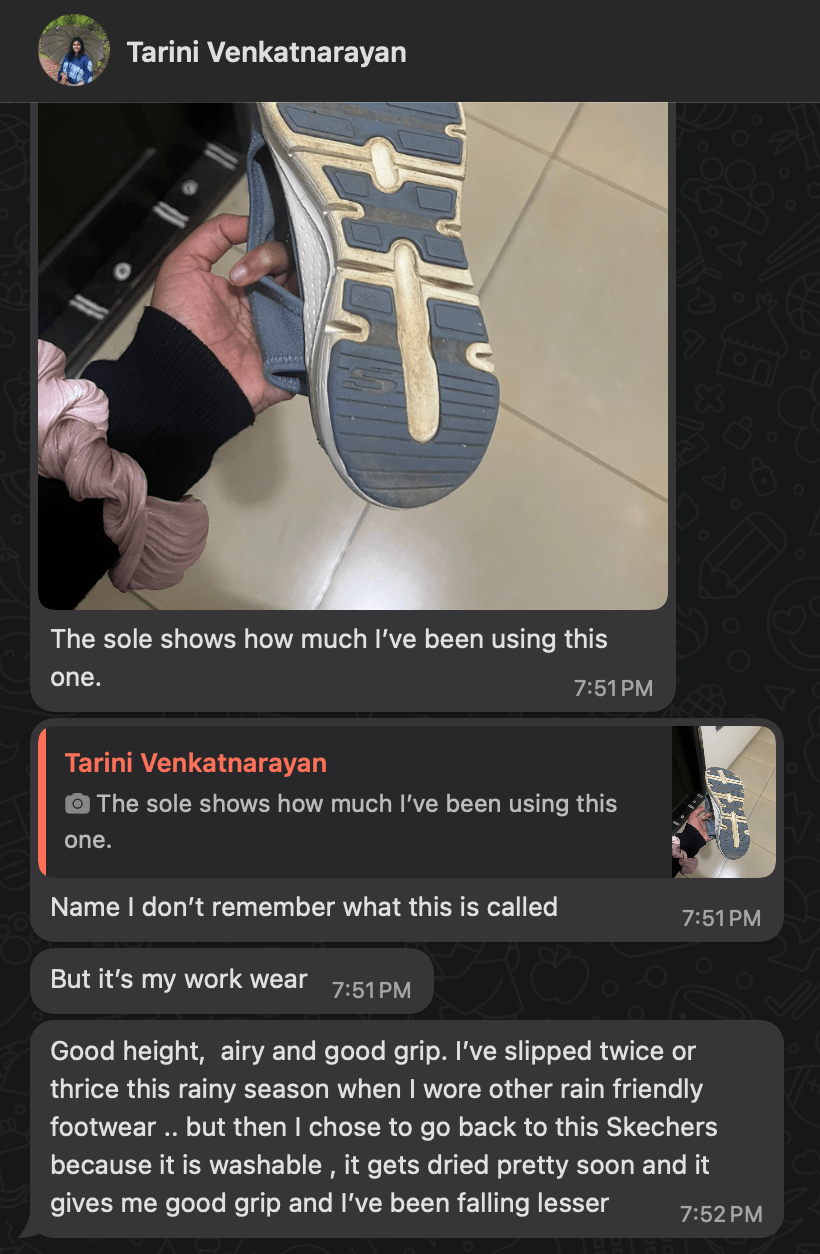Are HEY DUDEs Non-Slip? (My Experience with 3 Pairs for 3 Years)

TAKEAWAY
No, HEY DUDEs are not non-slip shoes. They lack the slip-resistant certification that allows a brand to sell footware as non-slip. However, they have good grip that can keep you from tripping and slipping on most surfaces.
While HEY DUDEs are known for their unmatched comfort, catchy style, and easy-going personality, one question that people often come across is- are HEY DUDEs non-slip? Well, the answer is no; they are not. But hey, that’s not the entire story.
I have worn three different pairs of HD shoes in the past three years, doing different types of walking, trekking, chasing (God, I have some interesting stories to tell), and that too on a range of bad and good surfaces- and bless the heavens- I haven’t slipped or tripped or fallen down once.
So, what does that say?
While these shoes are not scientifically slip-resistant and the brand can’t make such claims for marketing, their gripping power is strong. In fact, it is strong enough to keep you from falling on a usually slippery wet floor. But if we still talk of their slip-resistance-gradient (I just came up with that term), where do they stand? How do they perform on different surfaces? And are they non-slip for real?
I’ll use my experience with these kicks to explain it all in this blog. Cool? Let’s start.
Are HEY DUDEs slip-resistant?
It would be a stretch to believe that these shoes are slippery just because they don’t have a certification for being skid-proof. In fact, most HD shoes have a sturdy outsole that provides excellent traction, even on slippery surfaces.
Although certification advocates slip-resistance for any pair of shoes and must be considered to ensure safety and stability, only a few products from a few brands have the necessary license- HEY DUDE not being one.
What makes a shoe non-slip?
There’s a bunch of factors that make a pair of shoes non-slip- let’s take a look at them.
1. Non-slip design
Since non-slip shoes are supposed to participate in slippery activities without slipping, their design has to be different from the kicks that are not non-slip.
In most cases, non-slip shoes have grippy treads that can keep you stable even while walking on wet and slippery terrains.
2. Might as well be stain resistant
Non-slip shoes typically have uppers that help repel water and prevent stain marks. While HD shoe materials are designed to make them appealing for casual wear, they are ultimately unsuitable for industrial purposes. As a result, HEY DUDE shoes may be considered unsuitable for most working conditions because any oils, water, or liquids that fall on them will adhere to the shoe and stain it. This can significantly compromise the safety and integrity of your shoes.
3. Terrain friendly
The majority of non-slip shoes are known for being friendly to different terrains. For example, I have worn my Off-white Wally to dusty, muddy, wet, and grassy terrains and they have not failed me yet. However, I must add that I was always careful and was not entirely confident while walking on moist grass and wet mud. Speaking of other dusty areas, Wally felt totally comfortable and something I could put confidence in. Also, the shoe grips well on wet marble surfaces, until you start running (seriously, all the best if you have such intentions).
4. Protection
Most of the slip-resistant shoes include toe protection. And while all the Hey Dudes also include a toe box to protect users’ feet from the front, it’s made using flex-and-fold technology, making it insufficiently resilient against damage.
Slip-resistant HEY DUDEs alternatives
Well, this is one common question anyone who loves the comfort of HDs will ask—especially after figuring out they are not really non-slip. And fortunately, the answer is YES! Here are a few good options you can consider while looking for certified non-slip shoes that offer the same comfort and appeal as the HDs.
Vans
One of the popular style icons, Vans is known for its comfort and strong grip. While all of the Vans shoes are not non-slip, their Classic Slip-Ons are among the few slip-resistant Vans pairs.
Crocs
You may not be able to expect slip resistance from the Classic Crocs, but the Crocs On-the-Clock, Echo Clog Crocs, and Crocs Bistro pairs are really slip-resistant (see how comfortable, anti-slip, and feasible it is to wear Crocs around for almost everything).
Skechers
And here’s another pair of slip-resistant kicks that you can’t overlook. Being one of the most comfortable, go-to footwear options for oldies, teens, and everyone in between, Skechers can also add amazing grip to your walks and runs with their range of non-slip options.
Here’s a first-hand review from my friend Tarini Venkatnarayan, who we met last year at a spiritual event in Washington. I watched her jump and run and dance in her Skechers kicks and that really made me think- “maybe, she’s the best person to review these.”
So, here’s what Tarini says about two of her Skechers pairs:

 Sounds crazy impressive, right? Well, if you are looking for non-slip HEY DUDE alternatives, go for these Skechers- they won’t fail you.
Sounds crazy impressive, right? Well, if you are looking for non-slip HEY DUDE alternatives, go for these Skechers- they won’t fail you.
Standards and certifications for shoes to be slip-resistant
Several standards and certifications ensure that footwear meets slip resistance requirements. These standards help evaluate and confirm shoe slip resistance, which is especially important for occupational safety.
ASTM F2913-19
- Developed by the American Society for Testing and Materials (ASTM), this standard measures a footwear’s slip resistance.
- It uses specific testing conditions, including different surfaces and contaminants, to assess the coefficient of friction.
OSHA guidelines
- The Occupational Safety and Health Administration (OSHA) does not certify products but provides guidelines and recommendations for slip-resistant footwear in the workplace.
- Employers are encouraged to select shoes that meet recognized slip resistance standards to ensure worker safety.
SATRA TM144
- The SATRA Technology Centre, based in the UK, offers globally recognized testing methods, including the TM144 test for slip resistance.
- This test involves measuring the dynamic coefficient of friction on different surfaces to evaluate footwear performance.
ISO 13287:2019
- The International Organization for Standardization (ISO) provides this standard, which specifies methods for testing the slip resistance of protective footwear.
- It involves using specified lubricants and surfaces to simulate real-world conditions.
Marking and labeling
- Shoes that meet these standards often carry labels or markings indicating their compliance.
- Look for certifications or mentions of ASTM, SATRA, or ISO standards in product descriptions.
What makes a shoe non-slip?
Many shoes claim to be slip-resistant or anti-slip. However, shoes with specific tread patterns on the bottom may help prevent slips and falls. If you flip over a pair of slip-resistant shoes and look at the tread and grooves, you should notice hexagons, circles, or another shape that allows water to escape.
Plus, most of the non-slip kicks come with curvy soles that help avoid water trapping. For this reason, it’s advisable to look for shoes with soles that curve inward under the arch.
Marty’s final words
While HEY DUDE shoes are comfortable and stylish, they are not marketed as slip-resistant. And even though their performance may vary depending on the model and conditions, they lack the rigorous slip resistance certifications found in safety and non-slip footwear. In my opinion, if you wish to buy non-slip shoes, Vans slip-ons, and Skechers anti-slips can be some of the best options.
FAQs
And it doesn’t end here. Let’s take a look at some of the most frequently asked questions that may cross your mind.
1. What makes a shoe slip-resistant?
Slip-resistant shoes have specific tread patterns, like hexagons or circles, that allow water to escape, preventing slips. They also feature grooves throughout the sole to keep water from pooling underneath and usually have flat soles with a slight inward curve under the arch to enhance grip.
2. Are Hey Dudes prone to slipping?
HD shoes offer good traction and grip due to their sole design, but they lack the certification required for slip resistance. This means they might provide a different level of safety assurance than certified non-slip shoes in hazardous environments.
3. What are the key characteristics of slip-resistant shoes?
Slip-resistant shoes often have cushioned collars for comfort, versatile soles that adapt to various surfaces, stain-resistant uppers, and reinforced toe boxes for protection. These features ensure safety and comfort in demanding work environments.
4. Why is certification important for slip-resistant shoes?
Certification ensures that shoes meet specific slip resistance standards, providing peace of mind in environments where slipping is a risk. Certified shoes are rigorously tested on surfaces like oily floors and wet tiles to guarantee their safety and performance.
5. What standards and certifications should I look for in slip-resistant shoes?
Look for certifications such as ASTM F2913-19, SATRA TM144, and ISO 13287:2019. These standards ensure the shoes have been tested for slip resistance under various conditions. Labs or mentions in product descriptions often indicate compliance with these standards.
